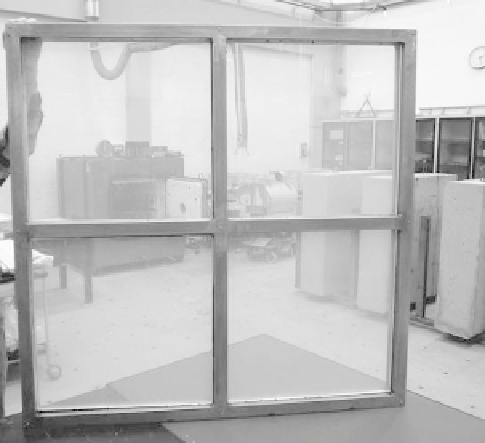Civil Engineering Reference
In-Depth Information
on the density of the sample, the measured thermal conductivity was in the
0.015-0.017 W/(mK) range and it decreased to 0.009-0.011 W/(mK) in
evacuated conditions. Moreover, a fi rst prototype of an evacuated double
glazed window with aerogel in the interspace was manufactured in the
1990s (500
28 mm
3
). A 20 mm thick aerogel pane was inserted
between two glasses, sealing the sheet units and evacuating the interspace
with the aerogel pane to a level below 5000 Pa. As expected, the same scat-
tering of light was found in the aerogel glazings as in the aerogel samples,
but excellent thermal performance was found and the thermal transmit-
tance reached a value less than 0.5 W/(m
2
K).
The very good results encouraged the research towards superinsulating
clear windows with aerogel and within the European projects HILIT
(Highly insulating and light transmitting aerogel glazing for window, EU
Non-Nuclear Energy Programme JOULE III, Contract no. JOR3-CT97-
0187, 1998-2001) and HILIT
×
500
×
(Highly insulating and light transmitting
aerogel glazing for super insulating windows, EU Energy, Environment and
Sustainable Development Programme, Contract no. ENK6-CT-2002-00648,
2002-2005) transparent and insulating plane monolithic silica aerogel tiles
(thickness of about 15
+
1 mm) were manufactured at a pilot-scale since
2004, in collaboration with the Swedish company AIRGLASS (Jensen
et al.
, 2004). Several prototypes were made, following the optimized aerogel
manufacturing process developed during the project (Fig. 10.4). A rim seal
±
10.4
An aerogel window manufactured by joining four optimized
aerogel tile prototypes in a test frame (Jensen
et al.
, 2004).

Search WWH ::

Custom Search